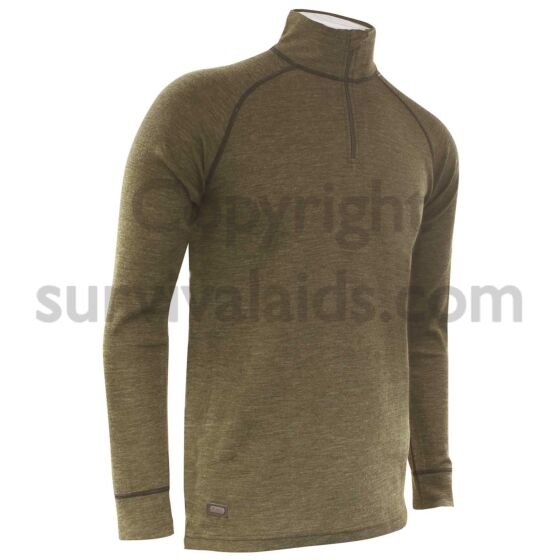Best Merino Wool Base Layer Site
Wiki Article
Why Are Yak And Merino Wool Baselayers Effective In Winter Sport Clothing Due To Their Fiber-Based Benefits As Natural As Well As Environmental Sustainability?
Natural fibers are a fantastic choice for a base layer in winter sports clothes, not just because of their performance but also their environmental sustainability.
Both wool from yak and merino are natural fibers made from animals (yak and merino sheep respectively). These renewable resources can be harvested sustainably and without harming animals. These fibers are naturally biodegradable and do not damage the environment.
Low Environmental Impact
Natural fibers' production generally has a less environmental impact compared to synthetic materials. The process of harvesting and cultivating wool involves fewer chemicals and less non-renewable substances when compared to synthetic fibers.
Energy Efficiency
The production of synthetic fibres like polyester or nylon requires more energy. Natural wool manufacturing is energy efficient, which results in less carbon emissions.
Reduced Microplastics Pollution
Natural wool fibers aren't able to pollute lakes with microplastics as do synthetic fibers.
The Longevity & Recyclability of plastics
Yak-merino clothing is durable and lasts for a very long duration. The fibers of wool are also able to be recycled and repurposed. This reduces production waste and the impact on the environment.
Sustainable PracticesSustainable Practices
Certain wool producers follow ethical and sustainable practices. This involves ensuring the welfare of animals and sustainable land management. It also ensures the fairness of labor and working conditions for employees involved in the production process.
Environmental Certification-
Certifications like the Responsible Wool Standard and the Global Organic Textile Standard verify the environmentally and ethically responsible methods used in the production of wool. It gives consumers confidence regarding the sustainability of wool production.
As a whole, yak Merino Wool base layers promote sustainability because they are made with natural fibers, have minimal environmental impact, and include ethical and sustainable practices into the supply chain. Natural fibers, like yak wool merino, are a great choice for winter sport apparel that promotes responsible consumption and environmentally friendly practices. Follow the most popular merino wool base layer for more examples including ice breaker thermals, merino wool underlayer, ski thermals mens, merino base layer womens, smartwool merino base layer, smartwool thermals, ski thermal underwear, icebreaker baselayer, best baselayers for skiing, best long underwear for skiing and more.

What Are The Advantages Of Wearing Bamboo Clothing With Regard To Thermal Regulation As Well As Uv Protection, Biodegradability, And Environmental Impact.
Bamboo clothing offers many benefits in terms of thermal regulation and UV protection.
Bamboo fabric provides insulation. It has natural thermal regulating properties that allow for warmth in colder weather. It regulates the body's temperature by retaining the heat in cooler temperatures and allowing for ventilation to avoid overheating during exercise.
UV Protection
UV Resistance- Bamboo materials provide natural protection against harmful UV Rays. It can provide an additional layer of protection against sun damage by blocking an extensive amount of ultraviolet rays.
Biodegradability-
Eco-friendly - Bamboo clothing breaks down in a natural way, which means that it doesn't leave harmful residues at the end of their cycle or contribute to environmental pollution. This helps reduce waste and the impact on the environment of clothes that are to be discarded.
Environmental Impact-
Sustainability - Bamboo as raw material is incredibly durable. It is a fast-growing, abundantly and with no chemical fertilizers. It's a renewable resource because of its speedy expansion.
Bamboo is more water efficient because it consumes less water than other crops, like cotton. This is crucial to conservation efforts, as it reduces pressure on water resources.
Soil Conservation
Soil Health - Bamboo farming does not typically deplete the soil's nutrients or require excessive irrigation. This leads to healthier soils and less detrimental agriculture practices.
Carbon Sequestration
Carbon Absorption Bamboo plants absorb more carbon dioxide, and release oxygen into the air than other plants. This attribute aids efforts to fight climate change through cutting carbon emissions.
The benefits of bamboo clothing include thermal regulation as well as UV protection, and biodegradability. It is an excellent option for those looking for clothing that is sustainable. These qualities match up with eco-friendly practices, bringing benefits to both the wearer as well as the natural environment. View the most popular bamboo clothings blog for more recommendations including bamboo trousers women, bamboo dress shirt, women's freefly apparel, halloween bamboo pajamas, bamboo onesies, dixxon bamboo shirt, bamboo fiber t shirt, short sleeve bamboo pajamas, bamboo jeans ross, bamboo clothing for women and more.

What Is The Way That Bamboo And Merino Clothing Compare With Wool In Terms Of Texture, Warmth And Moisture Absorption?
When comparing traditional wool bamboo, merino, and wool clothing in terms of warmth and moisture-absorption, texture is important.
Merino Wool Merino Wool Merino Wool is known for being soft and having very fine fibers. It has a more smooth, less scratchy feel in comparison to other kinds of wool. It is also considered more comfortable to wear.
Bamboo Clothing - Bamboo fabric has a silky, smooth texture that is often considered luxurious, like cashmere or silk. It is soft, making it a easy wear.
Traditional Wool The texture of traditional wool can be different. Certain types are more coarse and cause more itchiness than bamboo or merino clothing.
Warmth-
MerinoMerino Merino provides exceptional warmth thanks to its insulation capabilities. Even when damp it holds warmth and offers efficient insulation in cold weather conditions.
Bamboo Clothing- Bamboo clothing also provides warmth, however it may not provide the same level of insulation as Merino wool. It can regulate body temperature, and can be comfortable in a variety of climates.
Traditional Wool- Similar to wool from merino sheep wool is warm and insulation. The traditional wool can be more heavy than bamboo or merino clothing.
Moisture Absorption-
Merino Wool Merino Wool, with its remarkable ability to wick moisture removes moisture from the skin, allowing it to evaporate. Even when damp it stays warm.
Bamboo Clothing - Bamboo fabric also has the ability to wick moisture which draw away moisture from the skin and offering the comfort needed during physical activity. It is able to regulate humidity and keeps the wearer drier.
Traditional Wool: Although wool is able to absorb moisture, it doesn't possess the same moisture-wicking properties as bamboo or merino fabrics. Certain kinds of sheep's hair may feel damp and heavy after being wet.
Merino wool is known for its warmth, softness and moisture-wicking abilities. Bamboo clothing offers a silky and smooth texture, sufficient warmth, and good moisture control. Traditional wool could have a different texture, and provide warmth and absorption of moisture, however they are more coarse or heavier in comparison to the bamboo or merino clothes. Each fabric has distinct features that are customized to fit different needs and preferences. Follow the top bamboo winter clothing for site recommendations including smartwool 150 base layer, best merino wool base layer women's, merino wool base layer hunting, wool base layer mens, smartwool merino 250 base layer, merino wool long underwear mens, icebreaker baselayer, 400g merino wool base layer, icebreaker baselayer, best mid layer skiing and more.
